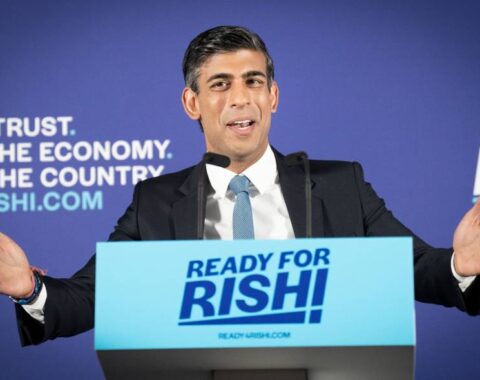Article Published in Bar and Bench.
“The basic rule may perhaps be tersely put as bail, not jail, except where there are circumstances suggestive of fleeing from justice or thwarting the course of justice or creating other troubles in the shape of repeating offences or intimidating witnesses and the like, by the petitioner who seeks enlargement on bail from the Court.”
This observation was made by V.R. Krishna Iyer, J. in State of Rajasthan v. Balchand[1] which was, at the time, a simple judgment of just five paragraphs. What it coined, however, was the humanistic principle that bail is the rule, and jail is the exception. Four decades later, countless judgments of the Supreme Court have reaffirmed and further elaborated the principle. In Gurbaksh Singh Sibbia v. State of Punjab[2], the Supreme Court referred to the Calcutta High Court’s judgment in Nagendra v. King-Emperor[3] and noted “It was observed that the principle to be deduced from the various sections in the Criminal Procedure Code was that grant of bail is the rule and refusal is the exception”. More recently, the same was reiterated in Dataram Singh vs State of Uttar Pradesh[4].
Now, despite the plethora of rulings on the subject, the Supreme Court recently found itself in yet another attempt to fortify it – “The principle that bail is the rule and jail is the exception has been well recognized through the repetitive pronouncements of this Court.” This was held by the Apex Court in Satender Kumar Antil vs Central Bureau of Investigation[5], a judgment which, no doubt, is now going to become the life raft for those languishing in custody, and those hoping to avoid it. The Supreme Court went through the Code of Criminal Procedure (“Code”) with a fine-tooth comb, assessing the provisions concerning the custody of the accused and how they are used, and often abused, by investigating authorities.
But why does the Supreme Court need to do this exercise ever so often? The answer is simple – despite the reiterations and innumerable attempts of various benches, the situation has not changed. The Supreme Court recorded in Antil (supra) that as per the statistics placed before it, more than two-thirds of the inmates in prisons today constitute undertrial prisoners. For a country where supposedly bail is the rule and jail is the exception, that number is not only damning, but a perfect depiction of an administrative system where well-intentioned directives originating at the apex rarely ever find effective implementation on ground.
Indiscriminate Use of Powers of Arrest
As the Supreme Court hints in its judgment, the issue begins the moment the criminal machinery is activated. Even though Section 41 empowers the police to arrest without a warrant, it carves out the conditions which need to be fulfilled for such an arrest – broadly that the police officer has reason to believe that the person has committed the offence, and further that if he is not arrested, he may commit another offence, or he may obstruct the investigation by tampering evidence, threatening
[1] (1977) 4 SCC 308
[2] (1980) 2 SCC 565
[3] AIR 1924 Cal 476, 479, 480
[4] (2018) 3 SCC 22
[5] SLP (CRL.) 5191 of 2021
witnesses, or run away. Importantly, these reasons have to be recorded in writing while making the arrest. The Court stated that it expects lower courts to come down heavily on officers making arrests without due compliance of Section 41[6] and 41A[7], and that investigating authorities follow the law as established in Arnesh Kumar vs State of Bihar[8].
The Difficulty in Obtaining Bail
The difficulty in obtaining bail and the high number undertrial prisoners was addressed four decades ago by the Supreme Court notably in its judgment in Hussainara Khatoon & Ors vs Home Secretary, State of Bihar[9] where the Court strongly observed “… The information contained in these newspaper cuttings is most distressing and it is sufficient to stir the conscience and disturb the equanimity of any socially motivated lawyer or judge. Some of the undertrial prisoners whose names are given in the newspaper cuttings have been in jail for as many as 5, 7 or 9 years and a few of them, even more than 10 years, without their trial having begun. What faith can these lost souls have in the judicial system which denies them a bare trial for so many years and keeps them behind bars, not because they are guilty, but because they are too poor to afford bail and the courts have no time to try them…” Most pertinently the Supreme Court noted that even under the law as it stands, what is required is that factors beyond monetary sureties are considered by the courts while granting bail. It is not that we desperately need a new law, we only need a more logical and liberal interpretation of the present.
Important Clarifications in Antil’s Case
The Supreme Court in Antil (supra) addressed an entire of spectrum provisions pertaining to custody and bail, a few of which are discussed here. For one, the Court issued an extremely relevant clarification regarding Section 437(1)(i) of the Code. The said provision states that an accused shall not be released on bail by a Magistrate if the court prima facie feels that he has been guilty of committing an offence punishable with life imprisonment for death. The Magisterial courts across the country have consistently interpreted this provision to mean that if the accused has been charged with an offence which is punishable either by life imprisonment or by death, Magistrates do not have the power to grant bail. This has created a peculiar situation where although the Magistrates have the jurisdiction to try a criminal case which is punishable by either a life or a death sentence, they decline to grant bail on the sole ground that it is barred by the Code. The Supreme Court placed reliance on the Bombay High Court judgment of The Balasaheb Satbhai Merchant Coop Bank Ltd. vs. The State of Maharashtra and Ors.[10] and clarified that it is only when an offence is exclusively triable by a Court of Sessions that the bar of Section 437(1)(i) will operate.
The Court further reiterated that special Acts which contain “twin conditions” for grant of bail – the accused should prima facie not be guilty and the Public Prosecutor ought to be heard – will still be amenable to Article 21 of the Constitution.
[6] Section 41: When police may arrest without warrant
[7] Section 41A: Notice of appearance before police officer
[8] (2014) 8 SCC 273
[9]tice-system-203962
IN RE : CONTAGION OF COV
As for economic offences, the Supreme Court reiterated the law laid down in Sanjay Chandra vs CBI[11] wherein it was held that although the nature of the charge may be relevant in understanding the gravity of the offence, what also has to be kept in mind is the prescribed punishment should the accused be convicted.
Interestingly, the Supreme Court in the aforesaid case also noted the existence of specific Bail Acts in the USA and the United Kingdom. While concluding the judgment, the Court recommended that the Government of India may consider the introduction of separate enactments to streamline the process of grant of bail.
The State of Indian Prisons
The Chief Justice of India, N.V. Ramana, while speaking at the 18th All India Legal Services Authority Meet at Jaipur, also addressed this pressing issue and said “In our criminal justice system, the process is the punishment. From hasty indiscriminate arrests to difficulty in obtaining bail, the process leading to prolonged incarceration of undertrials needs urgent attention”[12]. He further remarked that of the 6.1 lakh prisoners in 1378 prisons in India, 80% of them are undertrials, a number which is even higher than what the Supreme Court observed in Antil (supra). This sentiment was also echoed by the Law Minister Kiriren Rijiju at the same event, stating 3.5 lakh undertrial individuals are languishing in jails.
After the breakout of COVID in March 2020, the Supreme Court also took into account the issue of overcrowded prisons and the possibly fatal consequence of COVID breakouts in jails[13]. Based on the Supreme Court’s directions, HPCs were constituted and each state laid down its own guidelines for release of prisoners. In its meeting dated 04.05.2021, the HPC was also informed by the DG (Prisons) that against the optimum holding capacity of 10,026 inmates, prisons in Delhi were housing a staggering 19,679 prisoners, nearly double the capacity.
Concluding Remarks
As averred above, the judgment in Antil (supra) is the Supreme Court’s latest attempt to revive a dead letter of the law – Bail is the rule. This judgment was also one of the most conscious efforts of the top Court to cover all aspects of bail – different enactments, different kind of offences, different stages of the trial. Decades worth of Supreme Court judgments have fallen by the way side as the number of undertrial prisoners only grows.
While it may not be advisable to hold your breath on the Parliament enacting a special Bail Act, the horde of Supreme Court judgments, now given a fresh lease of life, will hopefully prove to be sufficient in addressing this critical situation.
[11]n Indian Country,
[12] https://www.livelaw.in/top-stories/hasty-arrests-difficulty-in-obtaining-bail-cji-says-process-is-punishment-in-our-criminal-justice-system-203962
[13] IN RE : CONTAGION OF COVID 19 VIRUS IN PRISONS, SUO MOTU WRIT PETITION (C) NO. 1/2020





